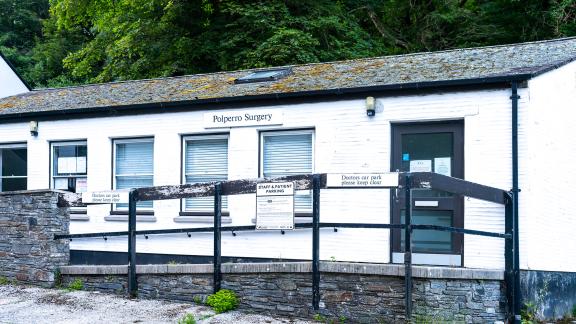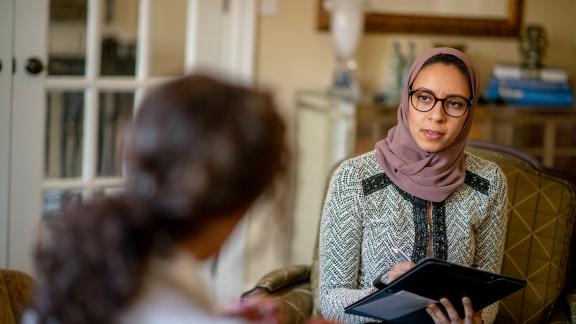On the precipice of change: primary care networks

Primary care networks (PCNs) are on the precipice of significant change in their roles within integrated care systems (ICS) through the introduction of the new health and social care bill. While PCNs are clearly identified as operational units of services to a community at neighbourhood level, their form and function within the system, place and provider collaboratives, urgently need to be considered by clinical directors (CDs).
My reflections, as a CD who occupied a strategic role in the shadow ICS, describe some of the challenges and solutions in the development of that role and creating influence for PCNs. Hopefully, it will support others to engage in the same way, empowering PCNs to position themselves to realise their place in the ICS.
Being part of the partnership board
In March 2020, Leicester Leicestershire and Rutland (LLR) CCGs created a system partnership board to begin transforming into an ICS. They invited membership from all the key partners including acute trust (UHL), community trust (LPT), out-of-hours services care provider (DHU), public health, social care, three CCG chairs, and requested representation from three CCG-based PCN ‘places’. After an election process involving the CDs in each CCG, I was one of the three CDs to be nominated to the ‘Health Economy Strategic Coordination Group’. Within a couple of months, COVID-19 catapulted the partnership board and accelerated the enablement of PCNs as delivery units in the community. We became integral to the board; informing and relaying PCN issues, creating solutions and showcasing the work and capability of primary care in the COVID-19 response. As a leader, I had very little experience of system working and decision-making, however the support of the two other strategic CDs, and the journey of my peers in the NHS Confederation were huge in building my confidence and bridging the gap.
COVID-19 accelerated the enablement of PCNs as delivery units in the community … [we were] informing and relaying PCN issues, creating solutions and showcasing the work and capability of primary care in the COVID-19 response.
The role of clinical director networks
I see the regional CD networks as key forums for those conversations going forward. The strength of our strategic CD team was pivotal in our success, building the PCN voice at the table and persuading our system partners of the agility, adaptability, and strength of PCNs. We recognised the need to build our own CD team and regularly convened to discuss our place-based challenges and aspirations. We aligned our messages at Health Economy Strategic Coordinating Group, and adhered to the principle and vision of ‘#PCNfirst’. Demonstrating a clear and simple message about your vision and in turn being able to deliver and represent your CD colleagues is key to establishing trust at the table. Although it can feel like ‘David and Goliath’, a phrase I used often at the time, at no point did I feel undervalued. If anything, there was a palpable enthusiasm for our ‘can do’ attitude and system approach to representing primary care.
We invested in relationships at system level and were rewarded in representation across the system executive boards, including the clinical leadership executive, which we are chairing this year. We have enjoyed the ability to work and develop in partnership with our acute and community trust colleagues, strengthening relationships and acting as partners in design and delivery. The three ICS CDs have been recognised for their value and the posts are now funded, in turn validating our positions in the ICS.
We invested in relationships at system level and were rewarded in representation across the system executive boards, including the clinical leadership executive.
We have also supported developing a 25 PCN LLR CD network which was key to establishing a mandate and common message from our constituent CDs. This alliance has been described in many forms across the country and is one of the first stages in creating a body to influence the ICS as PCNs. The challenge here is reaching the practices, particularly when PCNs have varying levels of maturity and the ICS can seem distant from daily practice.
A place at the table
CDs and their workforce are fatigued after designing and delivering ground-breaking vaccination programmes and supporting the recovery of general practice. Nevertheless, we cannot forget the potential influence of key roles we need to occupy in order to realise the full strategic potential of PCNs in the ICS. This could be a missed opportunity if CDs don’t organise at place and system, as not all ICSs are aware of how to engage with the amorphous body of primary care, in contrast to traditional structures of acute trusts and community partners. The critical issue of primary care leadership and representation has to rapidly be clarified to the ICS but, as a CD, you have a right to create a space at the table (or demand it) rather than wait to be asked.
Dr Pramit Patel, chair of the NHS Confederation PCN Network board, described the ICS as ‘Russian dolls’ of relationships at system, place and neighbourhood. While being equally important, the challenge is resource and organisation to find a coherent and coordinated voice, while retaining subsidiarity and autonomy at the PCN footprint. I have found that the NHS Confederation PCN Network is able to provide that support and direction.
Dr Aruna Garcea is a GP principal and trainer at the University Practice in Leicester and a clinical director of Leicester City and Universities Primary Care Network. She is also a member of the PCN Network clinical directors’ board.


